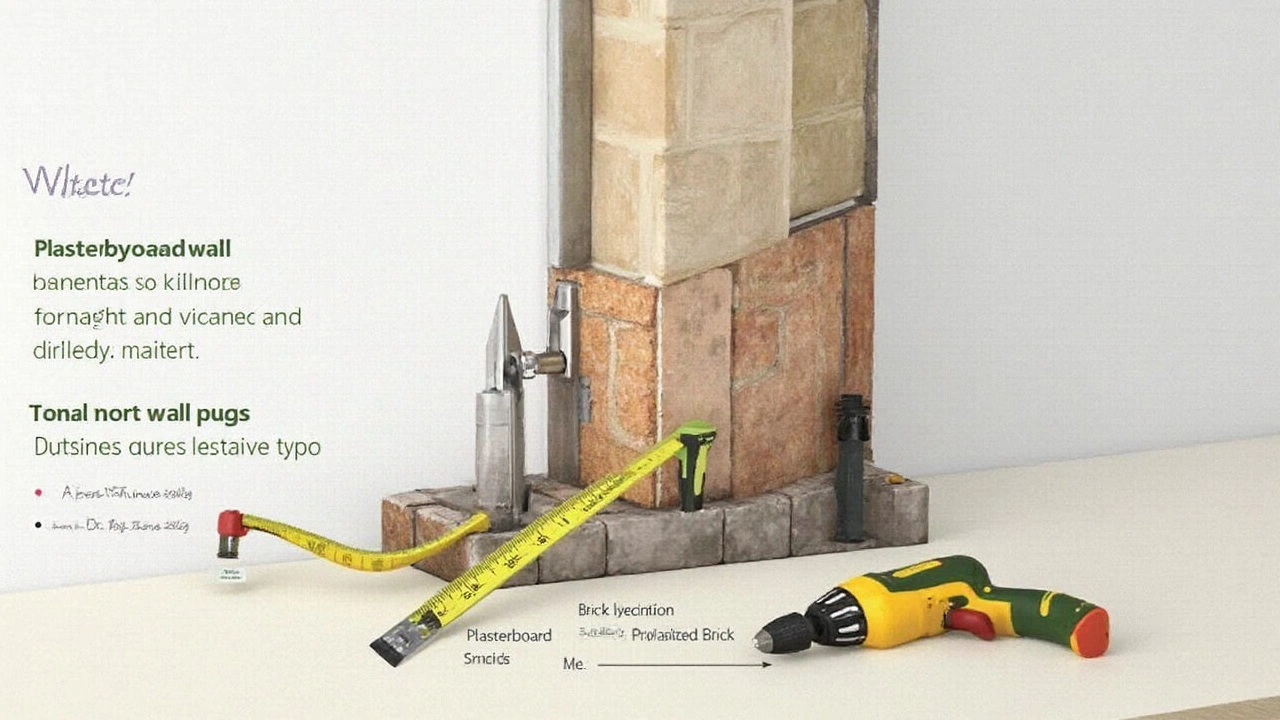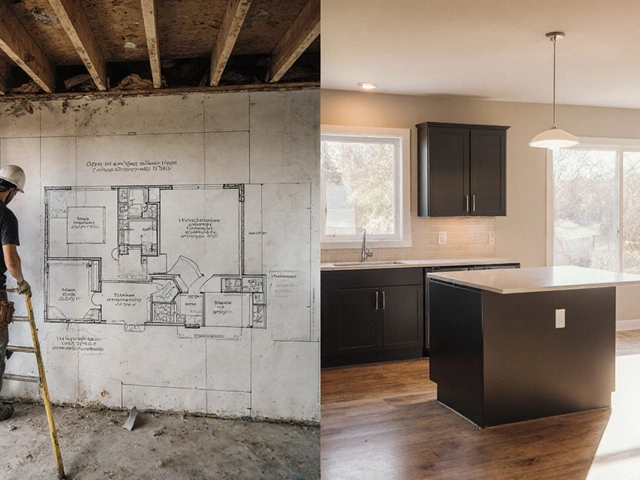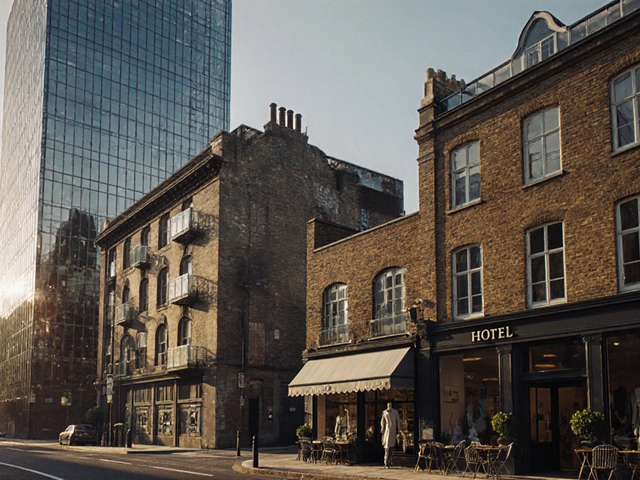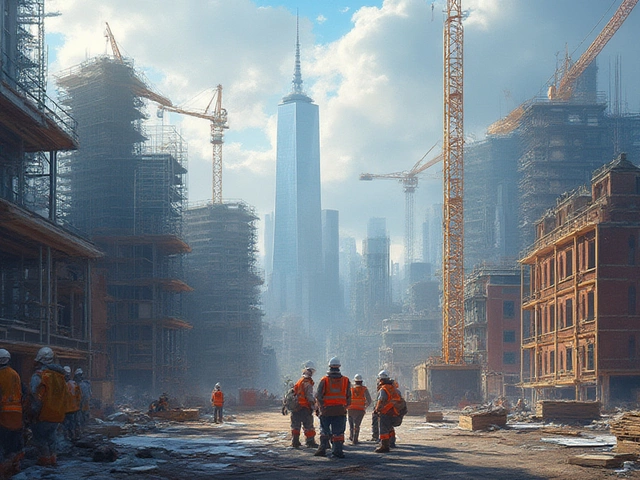Got a shiny new home and itching to hang your stuff? Stop before you grab the drill. New build walls don’t always play by the same rules as traditional houses. You might be looking at plasterboard over stud frames, dot-and-dab drywall, or even insulated panels—each comes with its own problems if you’re not careful.
The biggest mistake? Thinking your brand-new walls are tough enough for anything. The reality—most new build walls are thinner and have hidden pipes, cables, and insulation right where you might want to drill. You don’t want to hit a copper pipe or slice through a wire, which happens more often than you’d think. You could also void your new home warranty if you drill in the wrong spot or mess up the wall surface, landing you with repair bills instead of a cool wall-mounted gadget.
If you’re just moving in or planning a first round of decorating, knowing what’s inside your walls saves a ton of time and hassle. There’s real peace of mind in using the right fixings and techniques, so your shelves stay put and your warranty stays valid. A few checks and the right gear can make all the difference.
- What’s Behind the Walls: New Build Materials
- Risks and Warnings When Drilling
- Smart Steps for Safe Drilling
- Tips for Damage-Free Wall Mounting
What’s Behind the Walls: New Build Materials
So, you’re staring at those fresh, smooth walls in your new place, wondering what’s really behind them? You’re not alone—lots of new homeowners ask if they can drill into new build walls without turning their living room into a disaster zone. The answer starts with knowing exactly what you’re dealing with because new homes often have different setups than older ones.
Most new builds use plasterboard (also called drywall in the US) fixed to either timber or metal stud frames. It’s light and goes up fast, but it isn’t as strong as brick or solid block. If you knock on the wall and it sounds hollow, that’s usually plasterboard. Behind there, you’ll find metal or wooden studs spaced about 40cm to 60cm apart, sometimes packed with insulation for energy efficiency.
Builders often use what’s called "dot and dab"—that’s plasterboard stuck directly onto the blockwork with blobs of adhesive. This technique leaves gaps behind the boards, which means parts of the wall might not take much weight. You’re also more likely to see insulated panels or cavity wall systems in super energy-efficient homes thanks to tough new building codes.
Here’s a quick rundown of the main new build wall types and what that means for your drill:
- Plasterboard on studs: Super common. Easy to drill, but you need the right fixings—ordinary screws won’t hold much.
- Dot and dab drywall: Trickier for heavy loads since adhesive blobs create weak spots. Specially designed fixings work best here.
- Solid block or brick: Less common in new builds, but if you have it, those walls can handle more weight (just use a masonry drill bit).
- Insulated panels: Getting popular in eco-friendly houses, but these can be tricky. You might need advice from the builder on how to attach anything safely.
Check the plans or ask your site manager if you’re not sure. It sounds obvious, but you’d be shocked at how many people make wild guesses and end up with a wall that looks like Swiss cheese.
If you’re a fan of data, here’s a quick table of wall types and what you can usually hang on them:
| Wall Type | Max Load (Typical) | Best Fixings |
|---|---|---|
| Plasterboard on Stud | Up to 10kg with proper anchors | Spring toggles, drywall anchors |
| Dot and Dab Drywall | 5-10kg if you miss the dab spots | Grip-It fixings, cavity wall anchors |
| Brick/Solid Block | 40kg+ | Masonry plugs & screws |
| Insulated Panel | Varies, often low | Consult builder or use specialist fixings |
Getting to know your drilling new builds situation is the first step to hassle-free home projects. You save time and avoid surprises—like busting a water pipe or your fancy new shelf falling off.
Risks and Warnings When Drilling
Before you even think about drilling into new build walls, you’ve got to watch out for a list of hazards. The setup inside modern builds is rarely straightforward—those walls hide a maze of pipes, cables, and insulation. Get it wrong, and you could deal with electric shocks, busted pipes, water leaks, or holes that mess up not just the look but your builder’s warranty.
Here are the most common risks:
- Electric cables: Most new builds run cables vertically and horizontally from outlets and switches. Hitting one with your drill can blow your circuit or worse—give you a serious jolt.
- Water pipes: Especially around kitchens and bathrooms. Modern homes use plastic pipes that puncture easily, causing leaks that can ruin drywall fast.
- Weak fixings: Standard plasterboard isn’t great for holding heavy loads. Use the wrong plug or anchor, and your shelf or TV could come crashing down.
- Wall insulation: Energy-efficient new builds often pack walls with insulation. Drilling through can create cold spots or let moisture in if you’re not careful.
- Warranty issues: Most new build warranties cover major repairs, but any DIY damage can void parts of your cover or slow down claims when you need them.
Real numbers to keep in mind: UK insurance companies report thousands of claims each year for burst pipes and electrical mishaps caused by home decorating. One slip drilling into the wrong spot can cost several hundred pounds in repairs—or up to £5,000 if you flood a room or fry an electrical system.
Always check behind walls with a reliable detector before you go near them with a drill. And if you’re not certain, ask your builder or check building plans. It's way easier to double-check than to repair water damage or fight a warranty dispute over a rookie mistake. So, yes, you can drill into new build walls, but the risks are real and fixing mistakes isn’t cheap.

Smart Steps for Safe Drilling
If you want to drill into new build walls without drama, it pays to follow a checklist. Start by figuring out what’s behind the paint. Most newly built homes use lightweight plasterboard (drywall) over wooden or metal studs, and there’s usually a decent chance of hitting pipes, wires, or even insulation that melts if you get careless. In fact, UK building guidelines say pipes and cables often run vertically or horizontally from outlets and switches, so steering clear of these is crucial.
Here’s how to drill safely in your shiny new place:
- Check for hidden dangers. Always use a digital detector—these modest gadgets spot pipes, live wires, and studs. A quality one costs about as much as a takeaway dinner, but believing your luck will hold could cost way more in repairs.
- Pick the right fixing. Regular wall plugs don’t cut it in lightweight materials. Grab fixings made for plasterboard, like screw-in anchors, spring toggles, or hollow wall anchors. They’re simple enough to use and actually hold things up.
- Mark and measure twice. Sounds basic, but eyeballing it leads to disaster. Use a spirit level and tape to get it right. Drilling even a couple millimeters off in new builds can make shelves and TVs lean—and can easily land your drill into a pipe if you’re careless.
- Use the right drill setting. Turn off hammer mode for drywall and only switch it on for masonry. Hammering straight into plasterboard just shreds it and leaves a hole bigger than your original plan.
- Drill slow, not fast. Speedy drilling heats up bits, melts insulation, and cracks walls. You want a controlled, medium speed—steady wins the race here.
Want to see it all at a glance? Here’s a quick summary for the most common wall types in new builds:
| Wall Type | Best Drill Bit | Recommended Fixing |
|---|---|---|
| Plasterboard (stud) | Masonry or multi-purpose | Screw-in anchor, spring toggle |
| Dot-and-dab drywall | Masonry | Expanding wall plug for cavity |
| Stud with insulation | Multi-purpose | Long screw or specialist hollow wall anchor |
Think of these steps as cheap insurance for every hole you make. It’s way easier to double-check now than to fix a leaky pipe or rewire after a mishap. Next time you’re ready to tackle a small project, slow things down and stick to the plan. Saving a few minutes isn’t worth a busted wall—or a voided warranty.
Tips for Damage-Free Wall Mounting
Your new build walls might look perfect, but hanging anything heavy takes the right approach. Blindly drilling can lead to cracks, loose fixings, or worse—damaging pipes, cables, or insulation. Here’s how to keep your new build looking sharp while securing what you need:
- Find the Studs First: Most new build walls are plasterboard over wooden or metal studs. Grab a stud finder (even cheap ones work well) and mark where the studs run; that’s the safest spot for heavy shelves or a large TV. If you don’t hit a stud, you’ll need proper hollow wall anchors.
- Use the Right Fixings: Regular wall plugs aren’t great for plasterboard or dry-lined walls. Use heavy-duty plasterboard fixings, such as “toggle” or “spring” fixings for TVs or wall cabinets. For lighter stuff, plastic self-drill anchors get the job done.
- Check for Hidden Services: The risk of hitting pipes or cables is real. Use a decent wire/pipe detector that scans for live wires, water pipes, and metal before you drill.
- Start Small: Drill a thin pilot hole first. This lets you double-check for resistance and see if you’re about to hit something you shouldn’t. If all’s clear, make the hole bigger.
- Keep Clean: Hold a vacuum nozzle just under the drill site to catch dust—plasterboard dust is super fine and sticks to everything.
- Don’t Overload: Manufacturer specs matter. Most plasterboard walls have a safe load of 5-15kg per fixing with the right plug, but always check first.
Here’s a quick table with typical safe loads for common wall fixings in new build walls:
| Fixing Type | Max Load (kg) |
|---|---|
| Plastic Self-Drill Anchor | 5-10 |
| Spring Toggle / Molly Bolt | 15-25 |
| Heavy Duty Cavity Anchor | 25-40 |
| Direct Into Timber Stud | 50+ |
If you’re in doubt, stick to lighter deco items or call a pro for large, heavy things. That way, your walls (and your stuff) stay right where you want them.






